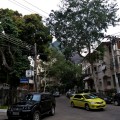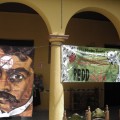REDD: Actually Working in Brazil
Sophie Trevitt | November 30, 2012.
Brazil’s announcement that Amazon deforestation levels have hit a record low was easily the most positive piece of environmental news in a week filled with news on permafrost and equally frosty UNFCCC negotiations. Brazil is responsible for destroying an area of the Amazon approximately the size of France. However, its efforts to decrease deforestation, particularly since deforestation peaked in 2004, have been hugely successful.
Brazil’s transition from a country built upon export-driven agriculture that depended upon forest felling for cattle grazing, to a country seriously reducing its land-use related emissions, is remarkable. Brazil’s story, more than anything, teaches us the importance of political will to implement regionally appropriate strategies backed up with law enforcement mechanisms.
REDD is the UNFCCC’s scheme that deals with deforestation. It stands for ‘Reducing emissions from deforestation in developing countries.’ REDD is a little different from other UNFCCC negotiating streams because it is primarily a concept; and there does not appear to be a concrete consensus on exactly what it enshrines. In some ways, Brazil is most definitely a REDD country. Brazil’s success in reducing deforestation has been achieved through the implementation of some of the UNFCCC REDD text’s recommendations as well as its own regionally specific strategies.
However, Brazil has always been opposed to REDD’s emissions trading mechanism which allows countries to use the emissions reductions achieved through abating deforestation for offsets. Developed countries usually push hard for this without regard for the administrative burden and expense of calculating and verifying emissions before translating them into credits for trading. A convoluted process that is not viable for most developing countries.
Brazil has managed to circumnavigate this for its own conglomerate of finance raising strategies. Recently, Brazil signed a $1 billion agreement with Norway that releases funding in tandem with Brazil reducing its rate of deforestation. This funding is pooled in Brazil’s ‘Amazon Fund’ which is a combination of donations and “performance payments” similar to those given by Norway, in response to reduced deforestation.
Brazil’s war against deforestation, however, is not as simple as securing finance. It also requires a rigorous surveillance system to try and regulate illegal “slash and burn” activity. Under the Forest Code, Brazil has created numerous indigenous territories and protected zones where deforestation is prohibited – flying in the face of decades of non-interference with the private sector. Research indicates that much of the recent decline in deforestation can be attributed to the establishment of these protected areas, highlighting the importance of Indigenous involvement in decisions regarding land and climate change.
Brazil is an important success story. Its importance lies also in its uniqueness. Developing countries are frequently plagued with multiple vulnerabilities and a lack of resources and finance. The problems of political instability, food and water security, a lack of economic viability and law enforceability all need to be addressed in order to implement successful projects to reduce deforestation. Brazil shows the world that political perseverance, human empowerment and enforceability are the three critical elements to success – the rest, you can pick and choose.
By Sophie Trevitt, photo by Climatico Analysis.












comment